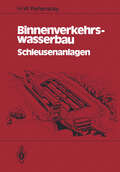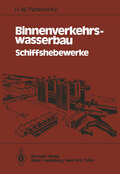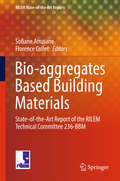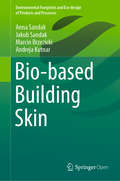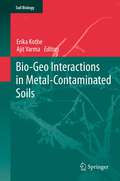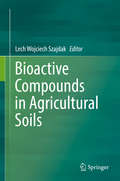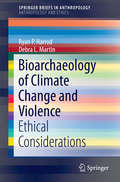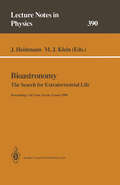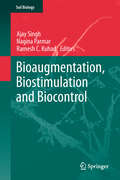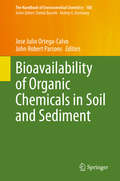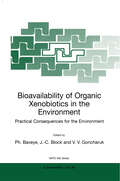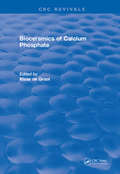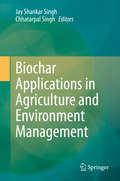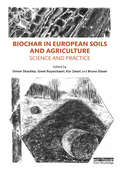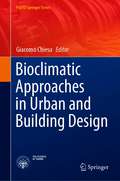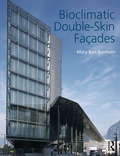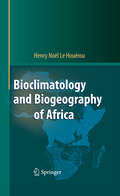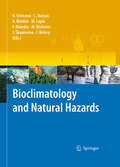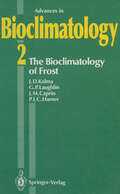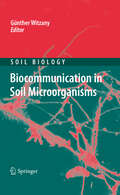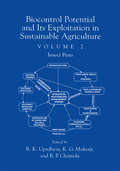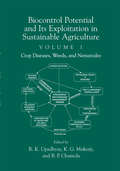- Table View
- List View
Binnenverkehrswasserbau: Schiffshebewerke
by H.W. PartensckyAnfang der zwanziger Jahre, nach Ende des 1. Weltkrieges, wurde in fast allen europäischen Ländern mit dem Ausbau der vorhandenen Bin nenwasserstraßen begonnen. Diese Entwicklung wurde nach 1950 in ver stärktem Maße fortgesetzt und dauert bis zum heutigen Tage an. Damit gewinnt das europäische Binnenwasserstraßennetz als Verbindung der Seehäfen mit den Umschlags plätzen des Binnenlandes und als Verkehrs weg für den zwischenstaatlichen Gütertransport in zunehmendem Maße an Bedeutung. Bei der Planung neuer Wasserstraßen und beim Entwurf der als Abstiegs bauwerke dienenden Schleusen und Hebewerke sind im Hinblick auf die Sicherheit des Schiffsverkehrs bestimmte Grenzwerte einzuhalten und Bemessungskriterien anzuwenden, die sich zum Teil aus theoretischen Uberlegungen, aber auch aus praktischen Erfahrungen an bestehenden Anlagen ergeben. Diese müssen vom planenden Ingenieur beim Entwurf eines neuen Schiffahrtskanals und seiner Abstiegsbauwerke beachtet werden. Gleichzeitig werden bei ihrer Einhaltung der erreichbaren Lei stungsfähigkeit der Wasserstraße gewisse Grenzen gesetzt. In der Fachliteratur der zwanziger Jahre wurden die derzeit gültigen Erkenntnisse für den Bau von Schiffahrtskanälen, Schleusen und Hebe werken in dem vom Springer-Verlag im Jahre 1921 herausgegebenen Buch von F. ENGELHARD "Kanal- und Schleusenbau" und dem im gleichen Ver lag erschienenen klassischen Werk von o. FRANZIUS "Verkehrswasserbau" dargelegt. In den folgenden Büchern von H. DEHNERT über "Schleusen und Hebewer ke" (Springer-Verlag, 1954) und H. PRESS über "Binnenwasserstraßen und Binnenhäfen" (Verlag von Wilh. Ernst & Sohn, 1956) wurde der wei teren Entwicklung bis Mitte der fünfziger Jahre Rechnung getragen.
Bio-aggregates Based Building Materials: State-of-the-Art Report of the RILEM Technical Committee 236-BBM (RILEM State-of-the-Art Reports #23)
by Sofiane Amziane Florence ColletThe work of the RILEM Technical Committee (TC -236 BBM) was dedicated to the study of construction materials made from plant particles. It considered the question whether building materials containing as main raw material recyclable and easily available plant particles are renewable. This book includes a state-of-the-art report and an appendix. The state-of-the-art report relates to the description of vegetal aggregates. Then, hygrothermal properties, fire resistance, durability and finally the impact of the variability of the method of production of bio-based concrete are assessed. The appendix is a TC report which presents the experience of a working group. The goal was to define testing methods for the measurement of water absorption, bulk density, particle size distribution, and thermal conductivity of bio aggregates. The work is based on a first round robin test of the TC-BBM where the protocols in use by the different laboratories (labs) are compared. p>
Bio-based Building Skin (Environmental Footprints and Eco-design of Products and Processes)
by Anna Sandak Jakub Sandak Marcin Brzezicki Andreja KutnarThis book provides a compendium of material properties, demonstrates several successful examples of bio-based materials’ application in building facades, and offers ideas for new designs and novel solutions. It features a state-of-the-art review, addresses the latest trends in material selection, assembling systems, and innovative functions of facades in detail. Selected case studies on buildings from diverse locations are subsequently presented to demonstrate the successful implementation of various biomaterial solutions, which defines unique architectural styles and building functions. The structures, morphologies and aesthetic impressions related to bio-based building facades are discussed from the perspective of art and innovation; essential factors influencing the performance of materials with respect to functionality and safety are also presented. Special emphasis is placed on assessing the performance of a given facade throughout the service life of a building, and after its end. The book not only provides an excellent source of technical and scientific information, but also contributes to public awareness by demonstrating the benefits to be gained from the proper use of bio-based materials in facades. As such, it will appeal to a broad audience including architects, engineers, designers and building contractors.
Bio-Geo Interactions in Metal-Contaminated Soils (Soil Biology #31)
by Erika Kothe and Ajit VarmaMetal contamination is an increasing ecological and eco-toxicological risk. Understanding the processes involved in metal mobilization, sorption and mineralization in soils are key features for soil bioremediation.Following an introduction to the physical, chemical and biological components of contaminated soils, various chapters address the interactions of soil, microorganisms, plants and the water phase necessary to transfer metals into biological systems. These include topics such as potential hazards at mining sites; rare earth elements in biotic and abiotic acidic systems; manganese redox reactions; biomineralisation, uranium in seepage water; metal-resistant streptomycetes; mycorrhiza in re-forestation; metal (hyper)accummulation in plants; microbial metal uptake; and their potential for bioremediation.This book will be of interest to soil biologists, geologists and chemists, researchers and graduate students, as well as consulting companies and small enterprises involved in bioremediation.
Bioactive Compounds in Agricultural Soils
by Lech Wojciech SzajdakThis volume looks at the impact that different cropping systems and tillage have on soil’s biologically active substances. It considers how phytotoxins accumulate and can inhibit the development of cultivated plants. Coverage explores the continuous cropping of rye, crop rotation, no tillage, and conventional tillage. It offers a comprehensive, comparative approach to allelopathic plant-soil interactions.The authors focus on free and bounded biologically active substances such as amino acids, auxins, humic and fulvic acids, transient radicals, and enzymes in light sand soils fertilized with different mineral and organic fertilizers.The chapters address fundamental questions relevant to the environmental challenges we face today and will deal with in the future. The results involve asking basic questions motivated by soil's chemical and biochemical processes. The answers will lead to the improvement of the quality of soil’s organic matter, which, in turn, can lead to increased crop yields.Readers will come to understand the relationship between ecological processes and environmental change on individual levels of biocomplexity as well as on systems in their entirety. The title is ideal for students and teachers for laboratory practical classes. Soil scientists, biochemists, chemists, plant ecophysiologists, “Natural Products” organic chemists, and other environmental scientists and specialists will also find it useful.
Bioarchaeology of Climate Change and Violence: Ethical Considerations (SpringerBriefs in Anthropology #6)
by Ryan P. Harrod Debra L. MartinThe goal of this monograph is to emphasize with empirical data the complexity of the relationship between climate change and violence. Bioarchaeology is the integration of human skeletal remains from ancient societies with the cultural and environmental context. Information on mortality, disease, diet and other factors provide important data to examine long chronologies of human existence, particularly during periods of droughts and life-threatening climate changes. Case studies are used to reconstruct the responses and short and long-term adaptations made by groups before, during and after dramatic changes in weather and climate. Interpersonal and group violence is also analyzed. The authors find that while in some cases there is an increase in trauma and violence, in other cases there is not. Human groups are capable of avoiding violent altercations and increasing broad networks of cooperation that help to mitigate the effects of climate change. A case study from the U.S. Southwest is provided that shows the variable and surprising ways that ancient farmers in the past dealt with long term droughts.
Bioastronomy: The Search for Extraterrestrial Life — The Exploration Broadens (Lecture Notes in Physics #390)
by Jean Heidmann Michael J. KleinThis book collects together a selection of the best papers presented at the Third International Bioastronomy Symposium held in 1990. The subject is bioastronomy, the search for life in the universe, andthe book is devided according to the five main stages of life as recognized by this new branch of science: cosmic organic, prebiotic, primitive biological, and advanced. Thereader will find here the most recent results obtained by top specialists from all over the world on hot topics such as the formation and discovery of planets, organic chemistry in meteorites and comets, prebiotic chemistry in the atmosphere of Titan, the search for primitive life in the permafrost of Mars, and, SETI itself, the search for extraterrestrial intelligence. Complemented by live discussions each presentation forms a review of the state-of-the-art treatment of a particular area and also looks toward those developments in bioastronomywhich will surely be realized in the next few years.
Bioaugmentation, Biostimulation and Biocontrol (Soil Biology #10)
by Ajay Singh, Nagina Parmar and Ramesh C. KuhadBioaugmentation, biostimulation and biocontrol approaches using microbial inoculants, biofertilizers, biochemicals and organic amendments improve soil biology, fertility and crop productivity by providing plant growth-promoting nutrients and suppressing soil-borne diseases and plant-parasitic nematodes. Our knowledge of microbial diversity and its function in soils has been increased tremendously due to the availability of a wealth of data gained through recent advances in the development of molecular methods and metagenomics for the evaluation of microbial diversity and functions in the rhizosphere environment of soil. Chapters dealing with the application of biofertilizers and organic amendments are contributed by experts – authorities in the area of soil science including microbiology and molecular biology – from academic institutions and the industry.
Bioavailability of Organic Chemicals in Soil and Sediment (The Handbook of Environmental Chemistry #100)
by Jose Julio Ortega-Calvo John Robert ParsonsThis book discusses bioavailability concepts and methods, summarizing the current knowledge on bioavailability science, as well as possible pathways for integrating bioavailability into risk assessment and the regulation of organic chemicals. Divided into 5 parts, it begins with an overview of chemical distribution in soil and sediment, as well as the bioavailability and bioaccumulation of chemicals in plants, soil, invertebrates and vertebrates (including humans). It then focuses on the impact of sorption processes and reviews bioavailability measurement methods. The closing chapters discuss the impact of bioavailability studies on chemical risk assessment, and highlights further research needs. Written by a multi-disciplinary team of authors, it is an essential resource for scientists in academia and industry, students, as well as for authorities.
Bioavailability of Organic Xenobiotics in the Environment: Practical Consequences for the Environment (NATO Science Partnership Subseries: 2 #64)
by Philippe BaveyeIn the continuing fight against organic environmental xenobiotics, the initial success attributed to bioremediation has paled, in part due to the low availability of xenobiotics entrapped within a soil or sediment matrix. This has generated a very significant wave of interest in the bioavailability issue. However, much experimental evidence is puzzling or contradictory, mechanistic theories are embryonic, and implications for the practice of bioremediation or concerning the natural fate of xenobiotics are still tentative. The debate in Europe and the USA is vigorous. Eastern Europe, following the liberalisation of the economy and political life, is evolving in a similar direction. In many cases, however, limited access to literature sources, severe language barriers, and the lack of a strong pluridisciplinary tradition are hampering the adoption of state of the art techniques. Originally intended to allow scientists in East European countries to become acquainted with the key aspects of the bioavailability debate that is unfolding in the scientific literature in the West, and with its implications for bioremediation efforts, the present book presents a very complete coverage of the theoretical and practical aspects of the (limited) bioavailability of organic xenobiotics in the environment.
Bioceramics Calcium Phosphate
by K. de GrootThe first chapters are fundamental, in that the physical chemistry of calcium phosphate salts is discussed, along with mineralization (with emphasis on teeth) and remodelling of mineralized tissues. Thereafter follows a treatment of the influence of implants o surrounding hard tissues. This topic is followed by a chapter on preparation methods and biomechanical and biological aspects of calcium phosphate implants. In conclusion, two chapters are devoted to (possible) dental and medical applications. It is hoped that basic researchers can use the book in their efforts to improve this promising class of materials further, and that clinicians are inspired to define further possibilities and � at least as important � limitations.
Bioceramics Calcium Phosphate
by K. de GrootThe first chapters are fundamental, in that the physical chemistry of calcium phosphate salts is discussed, along with mineralization (with emphasis on teeth) and remodelling of mineralized tissues. Thereafter follows a treatment of the influence of implants o surrounding hard tissues. This topic is followed by a chapter on preparation methods and biomechanical and biological aspects of calcium phosphate implants. In conclusion, two chapters are devoted to (possible) dental and medical applications. It is hoped that basic researchers can use the book in their efforts to improve this promising class of materials further, and that clinicians are inspired to define further possibilities and � at least as important � limitations.
Biochar Applications in Agriculture and Environment Management
by Jay Shankar Singh Chhatarpal SinghThis book provides up-to-date information on biochar use in management of soil health, agriculture productivity, green-house gases, restoration ecology and environment. Biochar application to nutrient deficient and disturbed soils is a viable option which may promotes advances in food safety and food security to human nutrition and overall fundamental research in the agricultural sciences. The book describes in detail how the recalcitrant biochar is able to persist for long periods of time and work as a shelter for soil microbial colonisation and their biomass/numbers. This book also includes contents related to important role of biochar applications in the restoration of contaminated agricultural soils. The book will be of particular interest to students, teachers and researchers in the disciplines.
Biochar in European Soils and Agriculture: Science and Practice
by Simon Shackley Greet Ruysschaert Kor Zwart Bruno GlaserThis user-friendly book introduces biochar to potential users in the professional sphere. It de-mystifies the scientific, engineering and managerial issues surrounding biochar for the benefit of audiences including policy makers, landowners and farmers, land use, agricultural and environmental managers and consultants, industry and lobby groups and NGOs. The book reviews state-of-the-art knowledge in an approachable way for the non-scientist, covering all aspects of biochar production, soil science, agriculture, environmental impacts, economics, law and regulation and climate change policy. Chapters provide ‘hands-on’ practical information, including how to evaluate biochar and understand what it is doing when added to the soil, how to combine biochar with other soil amendments (such as manure and composts) to achieve desired outcomes, and how to ensure safe and effective use. The authors also present research findings from the first coordinated European biochar field trial and summarize European field trial data. Explanatory boxes, infographics and concise summaries of key concepts are included throughout to make the subject more understandable and approachable.
Biochar in European Soils and Agriculture: Science and Practice
by Simon Shackley Greet Ruysschaert Kor Zwart Bruno GlaserThis user-friendly book introduces biochar to potential users in the professional sphere. It de-mystifies the scientific, engineering and managerial issues surrounding biochar for the benefit of audiences including policy makers, landowners and farmers, land use, agricultural and environmental managers and consultants, industry and lobby groups and NGOs. The book reviews state-of-the-art knowledge in an approachable way for the non-scientist, covering all aspects of biochar production, soil science, agriculture, environmental impacts, economics, law and regulation and climate change policy. Chapters provide ‘hands-on’ practical information, including how to evaluate biochar and understand what it is doing when added to the soil, how to combine biochar with other soil amendments (such as manure and composts) to achieve desired outcomes, and how to ensure safe and effective use. The authors also present research findings from the first coordinated European biochar field trial and summarize European field trial data. Explanatory boxes, infographics and concise summaries of key concepts are included throughout to make the subject more understandable and approachable.
Bioclimatic Approaches in Urban and Building Design (PoliTO Springer Series)
by Giacomo ChiesaThis book explores the bioclimatic approach to building design. Constant innovations in the field are evident, including the need to face climate changes and increase the local resilience at different scales (regional, urban, architectural). Differently from other contributions, this book provides a definition of the bioclimatic design approach following a technological and performance-driven vision. It includes one of the largest collection of research voices on the topic, becoming also a critical reference work for bioclimatic theory. It is intended for architects, engineers, researchers, and technicians who have professional and research interests in bioclimatic and in sustainable and technological design issues.
Bioclimatic Double-Skin Façades
by Mary Ben BonhamVisually enriched with over 250 photographs and drawings, Bioclimatic Double-Skin Façades is an essential reference guide for understanding the types and functions of double-skin façades. Author Mary Ben Bonham examines the history and continuing potential of double-skin architecture, informing on the variety of approaches possible and advising a rigorous integrated design process leading to application. Featuring a wide selection of architectural examples, the book will be of interest to professionals and students within the fields of architecture, engineering, and construction. Characterized by a buffer-like air space between two glazed building skins, double-skin windows and façades aim to improve building comfort and energy performance. Double skins introduce complexity and initial costs, yet significant buildings in locations around the globe continue to select this approach. In addition to exploring motivations, benefits, and cautions for designing with double skins, the book provides a primer on fundamental façade design concepts and strategies for control of thermal, luminous, and acoustic environments. Chapters also address alternative types of high-performance façades and implications for each phase of façade design and construction. Bioclimatic Double-Skin Façades promotes bioclimatic design that is inspired by nature, measured in performance, and uniquely adapted to climate and place. In-depth case studies illustrate how double-skin façades have been adapted to a range of climates and cultural settings: Marseille Library and Grenoble Courthouse in France, Cambridge Public Library in Massachusetts, Manitoba Hydro Place in Canada, and the Pearl River Tower in China.
Bioclimatic Double-Skin Façades
by Mary Ben BonhamVisually enriched with over 250 photographs and drawings, Bioclimatic Double-Skin Façades is an essential reference guide for understanding the types and functions of double-skin façades. Author Mary Ben Bonham examines the history and continuing potential of double-skin architecture, informing on the variety of approaches possible and advising a rigorous integrated design process leading to application. Featuring a wide selection of architectural examples, the book will be of interest to professionals and students within the fields of architecture, engineering, and construction. Characterized by a buffer-like air space between two glazed building skins, double-skin windows and façades aim to improve building comfort and energy performance. Double skins introduce complexity and initial costs, yet significant buildings in locations around the globe continue to select this approach. In addition to exploring motivations, benefits, and cautions for designing with double skins, the book provides a primer on fundamental façade design concepts and strategies for control of thermal, luminous, and acoustic environments. Chapters also address alternative types of high-performance façades and implications for each phase of façade design and construction. Bioclimatic Double-Skin Façades promotes bioclimatic design that is inspired by nature, measured in performance, and uniquely adapted to climate and place. In-depth case studies illustrate how double-skin façades have been adapted to a range of climates and cultural settings: Marseille Library and Grenoble Courthouse in France, Cambridge Public Library in Massachusetts, Manitoba Hydro Place in Canada, and the Pearl River Tower in China.
Bioclimatology and Biogeography of Africa
by Henry N. HouérouCovering an area of over 130 million km2 spanning the Mediterranean, equator and tropics, the African continent features a spectacular geographic diversity. Consequently, it is characterised by extremely variable climatic, edaphic and ecological conditions, associated with a wide range of natural vegetation and wildlife, as well as human population density, crops and livestock. In this book, Henry Le Houérou presents his bioclimatic and biogeographic classification of Africa. The extensive data provide the basis for comparisons between various African regions, and with regions on other continents such as Latin America or the Indian subcontinent. The results constitute a rational basis for national, regional and sub-regional rural development planning, and for agricultural research dealing with aspects such as plant and animal introductions, the extrapolation or interpolation of experimental or developmental findings, and ecosystems dynamics. Possible problems of applications are also examined.
Bioclimatology and Natural Hazards
by Katarína Strelcová Miroslav Blazenec Jan Holecy Axel Kleidon Milan Lapin Frantisek Matejka Csaba Matyas Jaroslav SkvareninaAnthropogenic influences to the earth's system, including the atmosphere, hydrosphere, biosphere, cryosphere and lithosphere, represent a serious challenge to our planet's ecosystems and natural environments. Bioclimatology, hydrology, bio-hydrology and eco-physiology are important scientific research areas with wide application to environmental protection, forestry, agriculture and water management, and protection against natural hazards including droughts, floods, windstorms, weather extremes, and wild fires. Bioclimatology helps to better understand the causes and impacts of natural hazards and how to prevent them. Improved knowledge of natural hazards is a vital prerequisite for the implementation of integrated resource management. It provides a useful framework for combating current climate variability and for adapting to ongoing climate change. This book presents research on the interactions between meteorological, climatological, hydrological and biological processes in the atmospheric and terrestrial environment. It highlights a spectrum of topics associated with climate change and weather extremes and their impact on different economic sectors. The contributing authors come from renowned scientific research institutions and universities and specialise in issues of climate change, soil-plant-atmosphere interactions, hydrologic cycle, ecosystems, biosphere, and natural hazards.
The Bioclimatology of Frost: Its Occurrence, Impact and Protection (Advances in Bioclimatology #2)
by J. D. Kalma G. P. Laughlin J. M. Caprio P.J.C. HamerThe economic costs of frosts in agriculture and horticulture in many parts of the world can be very significant. Reports in the media include accounts on how frosts have devastated coffee crops in Brazil or in Papua New Guinea, and how frosts have seriously damaged the Florida citrus industry. Frost may cause losses in current harvests or a decline in future yields through more permanent damage to trees and bushes. Damaging frosts may occur as infrequent, short-term events with sub-zero temperatures or with unusually severe winter temperatures which extend over long periods. In this book we have aimed at providing a comprehensive review of recent advances in the area of frost research. The stimulus for writing this book has come from the recognition that there is a shortage of recent texts which deal exclusively with the bioclimatology of frost. Bioclimatology deals with the relations between climate and life and the present text is particularly concerned with the effects of low temperatures on plants. Our purpose has been to assist researchers, engineers, extension officers and students in understanding the physical aspects of frost occurrence and frost distribution as well as the biological and phenological aspects of frost damage and to provide an overview of direct and indirect methods of frost pro tection and prevention.
Biocommunication in Soil Microorganisms (Soil Biology #23)
by Günther WitzanyCommunication is defined as an interaction between at least two living agents which share a repertoire of signs. These are combined according to syntactic, semantic and context-dependent, pragmatic rules in order to coordinate behavior. This volume deals with the important roles of soil bacteria in parasitic and symbiotic interactions with viruses, plants, animals and fungi. Starting with a general overview of the key levels of communication between bacteria, further reviews examine the various aspects of intracellular as well as intercellular biocommunication between soil microorganisms. This includes the various levels of biocommunication between phages and bacteria, between soil algae and bacteria, and between bacteria, fungi and plants in the rhizosphere, the role of plasmids and transposons, horizontal gene transfer, quorum sensing and quorum quenching, bacterial-host cohabitation, phage-mediated genetic exchange and soil viral ecology.
Biocontrol Potential and its Exploitation in Sustainable Agriculture: Volume 2: Insect Pests
by Rajeev K. Upadhyay K. G. Mukerji B. P. ChamolaPlant based Biotechnology has come to represent a means of mitigating the problems of global food security in the twenty first century. Products and processes in agriculture are increasingly becoming linked to science and cutting edge technology, to enable the engineering of what are in effect, designer plants. One of the most successful, non chemical approaches to pest management and disease control, which seeks a solution in terms of using living organisms to regulate the incidence of pests and and pathogens, providing a `natural control' while still maintaining the biological balance with the ecosystem. This volume, describes the various biological agents used to control insect pests of a variety of crops. Readers may also be interested in Volume 1: Crop diseases, Weeds and Nematodes, published in December 2000, ISBN 0-306-46460-8.
Biocontrol Potential and its Exploitation in Sustainable Agriculture: Crop Diseases, Weeds, and Nematodes
by Rajeev K. Upadhyay K. G. Mukerji B. P. ChamolaPlant based biotechnology has come to represent a means of mitigating the problems of global food security in the twenty-first century. Products and processes in agriculture are increasingly becoming linked to science and cutting edge technology, to enable the engineering of what are in effect, designer plants. One of the most successful , non-chemical approaches to pest management and disease control is biological control, which seeks a solution in terms of using living organisms to regulate the incidence of pests and pathogens, providing a natural control' while still maintaining the biological balance with the ecosystem. This volume, (the first of two), addresses the different types of biocontrol for different pests, namely, crop diseases, weeds and nematodes, and details the biology of both the pest and its enemies, which is vital for efficient use of biological control. The book has numerous contributors who are authorities in their fields, and would be an asset to those who have interest in sustainable agriculture and crop productivity.
